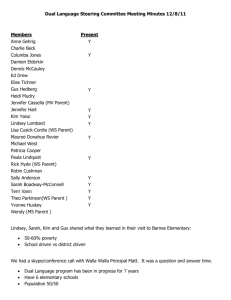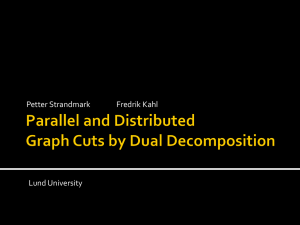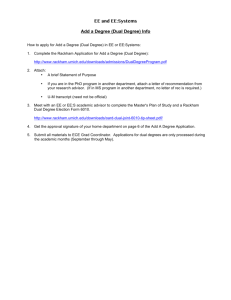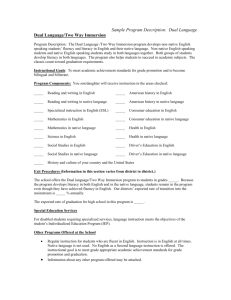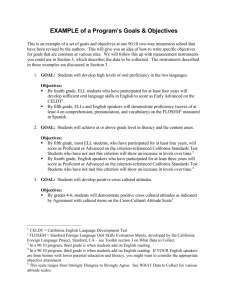CGTAT Notes 2010-05-17
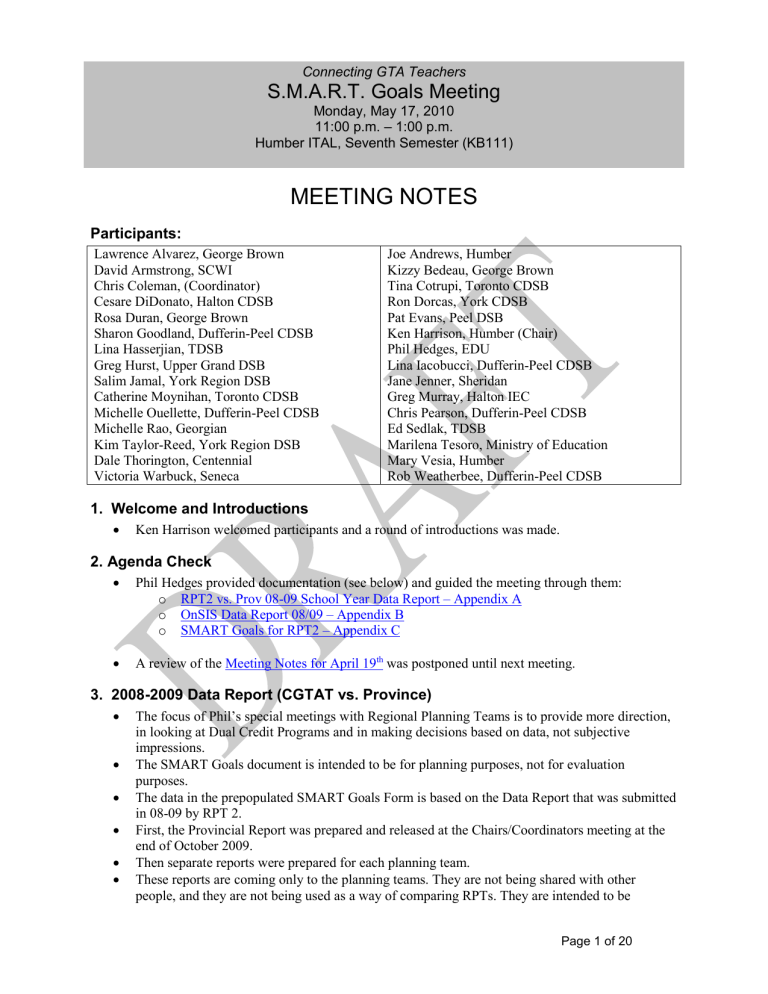
Connecting GTA Teachers
S.M.A.R.T. Goals Meeting
Monday, May 17, 2010
11:00 p.m. – 1:00 p.m.
Humber ITAL, Seventh Semester (KB111)
MEETING NOTES
Participants:
Lawrence Alvarez, George Brown
David Armstrong, SCWI
Chris Coleman, (Coordinator)
Cesare DiDonato, Halton CDSB
Rosa Duran, George Brown
Sharon Goodland, Dufferin-Peel CDSB
Lina Hasserjian, TDSB
Greg Hurst, Upper Grand DSB
Salim Jamal, York Region DSB
Catherine Moynihan, Toronto CDSB
Michelle Ouellette, Dufferin-Peel CDSB
Michelle Rao, Georgian
Kim Taylor-Reed, York Region DSB
Dale Thorington, Centennial
Victoria Warbuck, Seneca
Joe Andrews, Humber
Kizzy Bedeau, George Brown
Tina Cotrupi, Toronto CDSB
Ron Dorcas, York CDSB
Pat Evans, Peel DSB
Ken Harrison, Humber (Chair)
Phil Hedges, EDU
Lina Iacobucci, Dufferin-Peel CDSB
Jane Jenner, Sheridan
Greg Murray, Halton IEC
Chris Pearson, Dufferin-Peel CDSB
Ed Sedlak, TDSB
Marilena Tesoro, Ministry of Education
Mary Vesia, Humber
Rob Weatherbee, Dufferin-Peel CDSB
1. Welcome and Introductions
Ken Harrison welcomed participants and a round of introductions was made.
2. Agenda Check
Phil Hedges provided documentation (see below) and guided the meeting through them: o
RPT2 vs. Prov 08-09 School Year Data Report – Appendix A
o
OnSIS Data Report 08/09 – Appendix B
o
SMART Goals for RPT2 – Appendix C
A review of the Meeting Notes for April 19 th was postponed until next meeting.
3. 2008-2009 Data Report (CGTAT vs. Province)
The focus of Phil’s special meetings with Regional Planning Teams is to provide more direction, in looking at Dual Credit Programs and in making decisions based on data, not subjective impressions.
The SMART Goals document is intended to be for planning purposes, not for evaluation purposes.
The data in the prepopulated SMART Goals Form is based on the Data Report that was submitted in 08-09 by RPT 2.
First, the Provincial Report was prepared and released at the Chairs/Coordinators meeting at the end of October 2009.
Then separate reports were prepared for each planning team.
These reports are coming only to the planning teams. They are not being shared with other people, and they are not being used as a way of comparing RPTs. They are intended to be
Page 1 of 20
“conversation starters”, to see what your RPT data looks like in comparison with the provincial picture.
The updated version of this report is scheduled to be out this week. Nothing major will be changed in this report.
The top paragraph of the form is a summary of the information SCWI had. RPT 2 was approved for 991 students of which 751 actually participated according to the information that RPT 2 submitted. In other words 75.8% participated. Provincially, that number was 80%.
We need to look at the gap between the A pproved and the Actual because when we’re messaging about how many students ‘participated’, what number should be used? Typically the number that is used is the ‘Approved’ number. So, for this year SCWI is saying 7,500 students across the province have been approved, but won’t know how many students are actually participating until the Final Data Reports are submitted this June. If it turns out the gap is large, it could cause a problem.
The Age Distribution (page1) is just for information. One RPT may focus more or less on a particular age group than another team. A breakdown by gender has been requested. There are some RPTs with some particular programs/courses focussing on increasing the percentage of males or females, and this breakdown is a way of checking to see if that’s happening.
Need to quantify the distinction between students who are “disengaged and/or underachieving but who have the potential to succeed” (the primary target group) from students who are in SHSM programs in order to “protect” the primary group. When the provincial report for 08-09 was distributed, it said 40% of students in dual credit programs in 08-09 were “disengaged and/or underachieving with the potential to succeed”. In the view of some, this meant only 40% of students fit into the target group – which is not what SCWI wants to be saying and is probably not the reality.
Part of the difficulty here is the question. Some people don’t want to label students as
“disengaged and/or underachieving with the potential to succeed”. Some might find it nice if they could label them or if they came in pre-labeled. The question on the data report was “How many students were, or may have been, ‘disengaged and/or underachieving’ prior to entering this dual credit program?” What SCWI really wants to know is “How many students in your DCP fit the primary target group?” There is increasing pressure to allow several other groups of students into dual credit programs. SCWI is in the process of refining the Student Selection Check Lists that profiles students who fit the primary target group. Nevertheless, the Ministry wants the final decisions to remain at the local level.
RPT2’s percentage of students who are “disengaged and/or underachieving with the potential to succeed” was slightly higher in 08-09 than the provincial percentage.
It’s probably easier to determine if students have dropped out, but even there, questions are being asked often at a time when the students have left and we may not know this information, but
SCWI would like to be able to point out the fact that a significant number of these students had dropped out and this is the program that got them back and hopefully went a long way toward those students being successful.
Students with an Individal Education Plan (IEP) or identified through the Identification,
Placement and Review Committee (IPRC) process are students with special educational needs.
These students are flagged in the school systems, and in the OnSIS data submissions. There is a whole range of “exceptionalities”; it could be gifted, various types of learning disabilities, behavioural issues, and so on.
It’s possible for a student to have an IEP without going through the IPRC process. Schools want to provide the support needed without having to go through the IPRC process which is very formal and time consuming. The tendancy for the last number of years has been to integrate students who have special education needs.
Page 2 of 20
In the post-secondary systems, there all sorts of supports in place for students with special learning needs. In many cases there is more equipment and more service than in the secondary school system. An issue arises when secondary school students with special needs go on to college, they must self-identify in order to get the supports. But, typically they say they don’t need the support, and three months later the assessment process has to be started.
One of the advantages of the dual credit program for those students is the connection can be made sooner.
Attention needs to be paid to whether or not the needs of these students in dual credit programs are being met. So far there’s no evidence there’s a problem. In fact, parents and students are often surprised at the level of support available at the college level. If problems do arise, the Ministry wants to know about them.
The chart on page 3 shows that RPT2’s percentage of students with special educational needs was higher than the provincial percentage. The chart indicates that students with special needs are getting into DCPs -- which is important because we don’t want to say these students are being excluded, but at the same time we don’t want to say that all of our students have special education needs.
With regard to Success and Retention Rates for Dual Credit Programs (page 4), the start date was never clear. Ten days after the start is probably the date to use, but this can be sorted out at a local level and on an individual program basis. “It’s what you normally use”, e.g. the Add/Drop date the college uses, which is two sessions.
SCWI wants to use a more-or-less consistent number across the province because they want to be able to say that, of the number of students who started the program what’s the percentage who actually finished the program, whether or not they passed or failed. If we can get target group students into these programs and they are continuing these programs, that’s important. It’s not that the colleges saying, here are the courses we’re running and saying to the boards, send us students. There is a process involved to determine who gets into the program. There are some processes involved in deciding what to run, and there are some processes for review.
Looking at Figure 7, the Success Rate in 08-09 provincially was 79.1% and for RPT2 it was
81.45%. Those are pretty high numbers, given the group we’re working with.
The next couple of pages show the retention rate and success rate and the last page (6) shows, based on the Data Report, the number of programs that were offered in 08-09 by delivery approach, the number of students, and so on. Is there information, or should we be gathering information, about why the retention rates in some approaches are higher than in others? As it is, by looking just at the data, there is a ‘danger’ that it might be decided that one approach should be used and another dropped. Without explanation, perhaps this piece should not be published?
The issue was raised about the significant difference between assessment policies in school boards and assessment policies in colleges. Technically, the Procedures and Timelines document says it’s the college full disclosure policy that applies. It’s the college mark that applies. It’s been implied from the beginning that if a student did not pass the college course, they shouldn’t be getting credit for the high school course, but there’s been some argument against this, i.e. if the student’s mark is high enough, the student should receive the high school credit. However, there are some technical difficulties involved in doing this. SCWI knows this is a “hot” issue, but needs to determine the scope of the issue. If it’s a small number of students, then perhaps it can be handled locally, but if it’s a large number of students then we are going to have to have a policy.
For example, Seneca reported a course where the students must pass the final exam in order to pass the course. In some cases, students who were getting high marks (70-80%) would fail the course. This situation raised a “huge” issue.
Some discussion ensued. The whole issue of assessment needs to be explored further. Credit integrity is essential.
Page 3 of 20
4. OnSIS Data Report
For those in the boards, Phil brought copies of the Verification Report numbers. There are two
Verification reports that can be run at the school/board level that will allow you to check what data is in there for your dual credit students. So, that would allow you to make sure that the schools that are participating are actually reporting students and that the numbers are close to the reality.
We know that the 08-09 data is “deeply flawed”, but at this point it can not be corrected. The problem is that the OnSIS data is more and more the data the Ministry will use publicly, and it is the OnSIS data that is drawn from source, so nobody on a planning team has to collect and report it. The data is entered on an individual student basis into the school’s SMS system and then reported to OnSIS.
When the data reported by the RPTs is close to, or the same as, the OnSIS data, the RPTs will no longer have to report it.
If there are specific concerns at any time about what you’re trying to report to OnSIS, if you run the report and have a problem, let Phil know.
One difficulty with OnSIS is that it is three “snap shots” at three periods in time (October 31 st ,
March 31 st , and June 30 th ) and scheduling for dual credits isn’t the same.
Dual Credits can be reported through class enrolment. If it’s on the student’s timetable and a teacher’s name is associated with it, then it works automatically, the same as any other course.
SCWI knows this can’t always happen. But, a dual credit can also be reported through “Other
Credits”. Sometimes when the reporting is done through Other Credits, it’s not picked up by
OnSIS. Other Credits should pick up a course no matter when it was completed. The fact that it fits the schedule or not doesn’t matter with Other Credits. For example, Other Credits is what you use to report “External Music”.
Some discussion ensued about the basis of funding.
5. SMART Goals Form
The SMART Goals Template has been pre-populated with data from the RPT data that was submitted.
There are some things on the form that need to be changed. For example in Item 1, “# of schools involved”, The number “84” doesn’t mean very much. It might be more useful to ask, “Of the board partners, what percentage of schools are involved for each board that’s participating.” This is information the board partners could provide. It would be useful then to say, dual credits are offered in 8 out of 8 schools, or 1 out of 8. There may be many reasons this is happening, but it would be then be something to look at.
We should ask two questions: (i) In how many schools are dual crdits offered? (ii) In how many schools are students participating? Right now, the data will not tell us, out of the 800, or so, secondary schools, how many are actually participating. This would tell us if we are getting close to capacity.
Would it be possible to break Item 2, “# of Dual Credit Programs”, down to number of students in each program? Some programs might have as few as five students; others might have several hundreds.
The term dual credit “program” is problematic. One DCP might involve just one course; in other cases, several courses. So, the number of programs doesn’t really represent the growth because in some cases courses were added to existing programs in order to get them approved.
Item 3 might be useful “down the road” in encouraging/assisting an RPT to try or strengthen a particular approach.
Items 4 and 5 are little “fuzzy”.The reason the data is needed is to show we are reaching the target group for whom this program was designed. There is no “magic number” here; we’re just using it for information.
Whenever there’s an opportunity, we need to say to SCWI, we’ve noticed that our numbers are off here, but here’s why. (a) We’re paying attention to it, and (b) Here’s an explanation.
Page 4 of 20
Item7a shows Overall Retention Rate. Then in Item 7b, using our “flawed” definition of Starting and
Ending, shows the Retention Rates for all of the programs. One program is missing, the TTOP project, which was missed after the data was submitted subsequent to the due date. RPT Reps need to focus on getting all of the data and getting as good data as possible, and if there are gaps let SCWI know so they can follow up to make sure that when things are “rolled up” and the numbers are published they are based on the best information.
Where retention rates are lower, is it known why they are lower? Can something be done to address that, or is this the nature of that group? SCWI is not about to judge programs by retention rate.
The form does not show isolated data for students who took secondary school work at a college.
School Within a College programs will be flagged on the Final Data Report so we will be able to collect better information on that.
Retention Rates and Success Rates might be good areas to start formulating SMART Goals.
Items 9 is information everybody would like to have. The hope is that, this time next year, we will have data from OCAS (Ontario College Application Service) and OUAC (the Ontario Universities’
Application Centre), in addition to the OnSIS Report and the Planning Team data, that will say here’s the number of students from this planning team, broken out by board, who participated in dual credits in 09-10 and who applied to, were granted admission, and registered in a college in 10-11.
SCWI is requesting submission of SMART Goals by June 30. The intent is to pool the information and strategies that are out there to get a sense of what other teams are doing, what’s “do-able”, what have others have had trouble with, what others have had success with.
Item 11 on Selection Criteria relates primarily to the boards. SCWI wants to be able to demonstrate, to the college partners in particular, that we are not just selecting students at random; that we are selecting students one at a time; that there is a process involved; and that the process is known. We don’t want to be subject to someone saying, “Oh, you’re just dumping kids into this program.”
Item 12 asks for three SMART Goals that will guide programming for next year. The goals should be
“Specific, Measurable, Attainable, Realistic and Time Bound.”The goals should be related to programs, not individual student achievement. For example, one SMART Goal might be to focus on the gap between approved and actuals, to reduce the gap from 11% to 9%. Next year, SCWI wants to update this document, from the RPT Data Report, so that in the fall, they can give to the RPTs that will start with their SMART Goals and then it will have the two years updated data for each of these areas. We want to be able to say to funders there’s process in place, there’s accountability in place.
6. Draft SMART Goals
Discussion was opened to the group. If participants were thinking of any potential area where a goal might be formulated, they were asked to bring it forward.
One area suggested was related to Item 6, Approved Participants vs. Actual, where the number of
Approved Participants essentially doubled from 08-09 to 09-10. It’s uncertain that the Actual number will also double. So an example of a goal might be to measure the results, evaluate them, provide reasons the numbers weren’t achieveable.
At this point, the Ministry does not have any targets/thresholds for retention, and if/when it does, much further down the road, they will have to vary according to various factors, such as whether the program is new, etc.
SCWI will meet on May 18 th to discuss the change process.
The gap between Approved and Actual may not be all that meaningful for 09-10 because the possibility of a college strike was looming and a lot of people just didn’t want to get involved in it.
It is important to make the Ministry aware of this kind of issue when data is submitted. The analysis of the report will be done by a research person in the Ministry who is not a college or school-based person, and who has little or no direct experience with dual credit programs. That, in itself, is an
Page 5 of 20
advantage because she is looking just at the data, but she is not going to know any of the reasons behind the numbers. This information could go in the “Lessons Learned” section.
Everyone was encouraged to take away these documents and our discussion, and at our next meeting
SMART Goals will be on the Agenda. At that point, we should be able to identify some goals for our
RPT, and look at how we’re going to measure them.
The final version of the pre-populated form for the 09-10 Data Report will be issued this week. Some of the Items will be clarified, but nothing new will be asked. As soon as CGTAT receives the form, it will be distributed to members and a copy placed on the CGTAT website.
It may not be a SMART Goal exactly, but it was suggested we come up with a process that better allows us to learn from each other.
Within each college and the work that we do with our board partners, there are roles that are better defined today than there were several years ago. One example is the role of the Dual Credit Teacher which is the board person. But, the colleges have now, people who are organizing, coordinating, and managing dual credits who come from a wide variety of areas and experiences. Would it be a potential goal to better define and document these roles? It’s not going to be number or a change in a percentage.
We all register students. What does this process look like? Are there commonalities, best practices? Is there a way to come up with a common registration form? Is this another example of a potential goal?
The response was that there don’t have to be three goals directly related to the report. If there is some reference to the report, that’s good. Things like refining roles, registration processes, may be able to connect with program quality, student success, and so on. The goals have to be something that makes sense to this RPT.
Participants were invited to stay after the main meeting to discuss goals in small groups.
A question was asked re funding of textbooks/equipment for students. After some discussion, it was suggested this question be addressed to our Apprenticeship Sub-Committee.
The Agenda for next meeting will include SMART goals, Apprenticeship issues, Final Report,
Invoicing.
7. Other Business
Today’s Agenda and our “Important Dates” document are in error. Our next meeting is Monday,
June 21 st , not June 22 nd .
Next Meeting
Monday, June 21, 2010
Humber ITAL, North Campus
Residence Conference Room (T123)
12:00 – 2:00 Main Meeting
2:00 – 4:00 Room available for pre-arranged sub-committee meetings and pre-arranged board/college partnership meetings.
Page 6 of 20
Appendix A
– RPT2 vs. Prov 08-09 School Year Data Report
Connecting GTA Teachers RPT –
08/09 School Year Data
In the 08/09 school year, Connecting GTA Teachers RPT had 27 Dual Credit programs in place. While
991 students were approved for enrolment in the 27 Dual Credit programs, actual enrolment was reported as 751 students. Enrolment almost doubled compared to the previous year when 376 students were enrolled.
Age Distribution
– Age distribution was consistent with the provincial average , with the highest number of students being 17 and 18 years old.
– In 08/09, 17 and 18 year olds accounted for 73% of the Dual Credit students in Connecting GTA
Teachers RPT (Figure 1)
Figure 1
Disengaged and /or Underachieving and Students Previously Dropped Out
– 42.9% (322 students) were disengaged and/or underachieving prior to entering the Dual Credit program – slightly higher than the provincial average (40.4%)
– Connecting GTA Teachers RPT reported that 6.9%% (52 students) of the Dual Credit students had previously dropped out while the provincial average was 11.31%.
Page 7 of 20
Figure 2
Figure 3
Students Identified Through an IEP or IPRC
– In 08/09 school year, 22.5% (169 students) had an Individual Education Plan while the provincial average was 19.1%. (Figure 4)
Page 8 of 20
– 13.6% (102 students) were identified through an IPRC process compared to 15.6 % at provincial level. (Figure 5)
Figure 4
Page 9 of 20
Figure 5
Success and Retention Rates for Dual Credit Programs
Retention rate represents the percentage of students who participated in the program from start to completion. These students didn’t necessarily successfully complete the program.
The provincial retention rate for Dual Credit programs stayed almost the same for both school years, at approximately 85%.
The retention rate for students in Dual Credit programs in Connecting GTA Teachers RPT was 86.6% (Figure 6)
Student success rate represents the percentage of secondary school credits attempted that were successfully completed.
In the 08/09 school year, the provincial student success rate for Dual Credit programs was 79.1% while for students enrolled through Connecting GTA Teachers RPT, the success rate was 81.5%.
Figure 6
Page 10 of 20
Figure 7
Dual Credit Programs/ Students by Approach
Team-Taught At Secondary School Or College (3)
3 programs were offered u sing the “Team-taught level 1 apprenticeship at secondary school” approach. This represented 10.12% of the number of students in Dual Credit programs (76 students)
Retention rate for this approach was 97.4% while 89.5% of credits attempted were successfully completed
College-Delivered Course at College (5)
17 programs were offered through “College-delivered course at college” approach. This accounted for 74.1% of the total number of dual credits students (555 students)
Retention rate was recorded at 82.3% while 74.1% of the credits attempted were successfully completed
College-Delivered Level 1 Apprenticeship at College Location (6A)
7 programs were offered through the College-delivered level 1 apprenticeship at college location approach . This represented 16% of total number of dual credit students (120 students)
Retention rate was recorded at 99.2% while 90.7% of credits attempted were successfully completed
Page 11 of 20
Appendix B – OnSIS Data Report 08/09
Number of Credits Earned and Number of Students Reported to OnSIS, 08/09 School Year
Board Name
Toronto DSB
York Region DSB
School Name
Bendale Business & Technical Institute
Birchmount Park Collegiate Institute
Danforth Collegiate Institute and Technical School
David and Mary Thomson Collegiate Institute
Don Mills Collegiate Institute
Downsview Secondary School
Kipling Collegiate Institute
Lakeshore Collegiate Institute
Lester B Pearson Collegiate Institute
Nelson A Boylen Collegiate Institute
Newtonbrook Secondary School
North Albion Collegiate Institute
Northview Heights Secondary School
Parkdale Collegiate Institute
R H King Academy
Scarborough Centre for Alternative Studi
Thistletown Collegiate Institute
Timothy Eaton Business & Technical Institute
Vaughan Road Academy
West Humber Collegiate Institute
Western Technical & Commercial School
Westview Centennial Secondary School
William Lyon Mackenzie Collegiate Institute
York Mills Collegiate Institute
Aurora High School
Bayview Secondary School
Dr G W Williams Secondary School
Dr John M Denison Secondary School
Earned
Credits
5
7
1
11
15
1
2
1
4
9
2
2
7
30
7
6
13
2
10
2
23
10
1
1
11
9
7
5
Students
11
15
3
17
22
1
2
2
4
9
2
3
3
34
5
6
17
2
16
2
31
13
1
2
20
13
10
5
Page 12 of 20
Upper Grand DSB
Peel DSB
Halton DSB
Toronto CDSB
Huron Heights Secondary School
Maple High School
Markville Secondary School
Middlefield Collegiate Institute
Milliken Mills High School
Newmarket High School
Pierre Elliott Trudeau High School
Richmond Green Secondary School
Richmond Hill High School
Sir William Mulock Secondary School
Stephen Lewis Secondary School
Stouffville District Secondary School
Sutton District High School
Thornhill Secondary School
Westmount Collegiate Institute
Orangeville District Secondary School
Westside Secondary School
Cawthra Park Secondary School
Clarkson Secondary School
Fletcher's Meadow Secondary School
Gordon Graydon Memorial Secondary School
Humberview Secondary School
Lincoln M. Alexander Secondary School
Peel Alternative North ISR
Port Credit Secondary School
Streetsville Secondary School
T. L. Kennedy Secondary School
The Woodlands Secondary School
West Credit Secondary School
Burlington Central High School
Gary Allan High School - Burlington
Lester B. Pearson High School
Archbishop Romero Catholic Secondary School
Bishop Marrocco/Thomas Merton Catholic Secondary S
Blessed Mother Teresa Catholic Secondary School
Don Bosco Catholic Secondary School
Page 13 of 20
2
2
2
2
4
0
4
0
14
0
25
3
1
2
17
5
2
4
3
2
5
3
4
16
2
15
2
6
3
2
2
12
4
6
10
1
2
2
2
4
4
1
4
1
8
3
36
5
1
4
41
7
3
5
6
2
6
5
4
10
1
16
1
3
1
1
1
6
2
4
6
2
York CDSB
Dufferin-Peel CDSB
Father Henry Carr Catholic Secondary School
Father John Redmond Catholic Secondary School
Jean Vanier Catholic Secondary School
Madonna Catholic Secondary School
Michael Power/St Joseph High School
Msgr Fraser-Isabella
Pope John Paul II Catholic Secondary School
St Basil The Great College
St Patrick Catholic Secondary School
Br André Catholic High School
Cardinal Carter Catholic Secondary School
Holy Cross Catholic Academy High School
Sacred Heart Catholic High School
St Elizabeth Catholic High School
St Jean de Brebeuf Catholic High School
St Joan of Arc Catholic High School
St Robert Catholic High School
St Therese of Lisieux Catholic High School
Archbishop Romero Catholic Secondary School
Ascension of Our Lord Secondary School
Total
Number of Students Reported Locally and to OnSIS, 08/09 School Year
Delivery Type
Dual credit: college delivered college course (5)
Dual credit: college-delivered apprenticeship program (6)
Dual credit: team-taught college course (3)
Total
OnSIS Reporting
533
107
1
641
Local
Reporting
555
120
76
751
5
4
4
11
1
10
7
1
14
2
21
12
4
6
1
3
1
3
48
2
641
11
8
8
13
0
6
3
1
9
0
6
7
2
10
2
6
2
5
22
2
514
Page 14 of 20
Appendix C
– SMART Goals for RPT2
SCWI Regional Planning Team SMART Goals
March / April 2010
RPT # Connecting GTA Teachers RPT
__________________________________________________________
Date of visit:
Dual Credit Programs
1. # of schools involved
Proposed 2010-11 2008-09
84
2. # of programs
2008-09
27
2009-10
2009-10
58
3a. Programs by approach 2008-09
3 4A 4B 5
17
Proposed 2010-11
59
6A
7 3
3b. Programs by approach 2009-10
3 4A 4B 5
30 6
3c. Programs by approach 2010-11
6A
22
5
30
6A
24
3
4
4A
1
4. % from primary target group
4B
2008-09
42.88%
2009-10 Proposed 2010-11
5. % in SHSM
2008-09 2009-10
6a. Participants approved
2008-09 2009-10
Proposed 2010-11
Proposed 2010-11
6B
6B
6B
Page 15 of 20
991
6b. Actual participants
2008-09
751
2113
7a. Overall Retention rate
2009-10
2008-09
86.6%
2009-10
7b. Range of retention rates by program
Program
Accel OYAP - Cook Br2
Accel OYAP- Elect Constr & Maint
AccelOYAP - AutoServTechn
AccelOYAP - Carpenter
AccelOYAP - ECE
AccelOYAP - Plumber
AccelOYAP - Res AC Sys Mech
Alternative Education
Business
Careers in Hospitality & Tourism 2
Cent + Scarborough Area SS
Centennial + D&M Thomson
Centennial + RH King SHSM
Customer Service
Deaf Studies Dual Credit
Discover Tourism
Hospitality & Tourism
Landscaping
Orangeville Project
Paths thru Adv Manuf Tech
Pathways thru Adv Elect Tech
Pathways to Accounting
Prescriptions for Health
SSOWT
STEPS to College
Technology
Transition to College
Total
Students
Start
19
23
18
23
15
14
8
17
12
13
18
16
13
13
51
26
6
15
17
14
37
5
48
163
62
64
21
751
Humber College
Centennia l
Seneca
George Brown
Sheridan
7c. Top program by retention rate
Students
End
19
23
18
23
14
14
8
1
7
9
15
16
12
12
41
26
5
14
14
14
36
5
43
125
62
53
21
650
2424
Proposed 2010-11
Proposed 2010-11
Retention
Rates
100.00%
100.00%
100.00%
100.00%
93.33%
100.00%
100.00%
5.88%
58.33%
69.23%
83.33%
100.00%
83.33%
93.33%
82.35%
100.00%
92.31%
92.31%
80.39%
100.00%
97.30%
100.00%
89.58%
76.69%
100.00%
82.81%
100.00%
86.55%
Page 16 of 20
Program
Accel OYAP - Cook Br2
Accel OYAP- Elect Constr & Maint
AccelOYAP - AutoServTechn
AccelOYAP - Carpenter
AccelOYAP - Plumber
AccelOYAP - Res AC Sys Mech
Centennial + D&M Thomson
Discover Tourism
Paths thru Adv Manuf Tech
Pathways to Accounting
STEPS to College
Transition to College
Students
Start
19
23
18
23
14
8
16
14
26
5
62
21
7d. Contributing factors
7e. Most challenging program by retention rate
Alternative Education - 5.88%
7f. Contributing factors
7g. Impact on future planning
8a. Overall Success rate
2008-09 2009-10
81.45%
8b. Range of success rates by program
Program
Accel OYAP - Cook Br2
Accel OYAP- Elect Constr & Maint
AccelOYAP - AutoServTechn
Potential
Credits
57
46
36
Credits
Earned
56
46
36
Students
End
19
23
18
23
14
8
16
14
26
5
62
21
Retention
Rates
100.00%
100.00%
100.00%
100.00%
100.00%
100.00%
100.00%
100.00%
100.00%
100.00%
100.00%
100.00%
Proposed 2010-11
Success
Rates
98.25%
100.00%
100.00%
Page 17 of 20
AccelOYAP - Carpenter
AccelOYAP - ECE
AccelOYAP - Plumber
AccelOYAP - Res AC Sys Mech
Alternative Education
Business
Careers in Hospitality & Tourism 2
Cent + Scarborough Area SS
Centennial + D&M Thomson
Centennial + RH King SHSM
Customer Service
Deaf Studies Dual Credit
Discover Tourism
Hospitality & Tourism
Landscaping
Orangeville Project
Paths thru Adv Manuf Tech
Pathways thru Adv Elect Tech
Pathways to Accounting
Prescriptions for Health
SSOWT
STEPS to College
Technology
Transition to College
Total
8c. Top program by success rate
1159 944
Program
Accel OYAP- Elect Constr & Maint
AccelOYAP - AutoServTechn
AccelOYAP - Plumber
Paths thru Adv Manuf Tech
Potential
Credits
46
36
28
40
Credits
Earned
46
36
28
40
8d. Contributing factors
8e. Most challenging program by success rates
Alternative Education – 5.88%
8f. Contributing factors
8g. Impact on future planning
6
15
17
28
12
13
18
16
46
30
28
16
17
222
5
48
163
62
64
77
13
13
51
40
5
11
14
26
7
8
12
12
40
25
28
4
1
194
4
43
97
47
53
71
10
12
42
40
Success
Rates
100.00%
100.00%
100.00%
100.00%
86.96%
83.33%
100.00%
25.00%
5.88%
58.33%
61.54%
66.67%
75.00%
83.33%
73.33%
82.35%
92.86%
76.92%
92.31%
82.35%
100.00%
87.39%
80.00%
89.58%
59.51%
75.81%
82.81%
92.21%
81.45%
Page 18 of 20
9. a % dual credit participants who graduated
2008-09 2009-10
9b. % applied to pse
2008-09 2009-10
Proposed 2010-11
Proposed 2010-11
9c. % registered in pse
2008-09 2009-10 Proposed 2010-11
10. What other data are you collecting? How are you using/planning to use it?
11. To what extent is the draft selection criteria being used? How useful is it? What modifications would you suggest? b. a.
12. SMART goals for 2010-11 (overall? Program specific?) c.
13. Challenges / Concerns / Feedback to be shared with the Ministry
Page 19 of 20
Page 20 of 20




